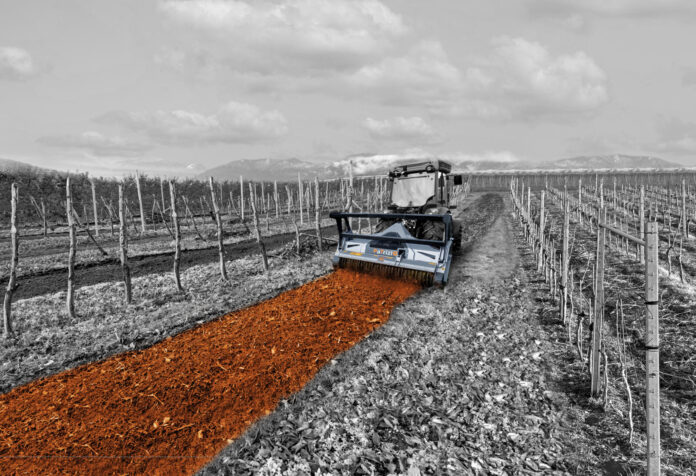Forestry mulchers play a crucial role in land management and vegetation control, serving as versatile tools for various applications ranging from agricultural projects to environmental restoration.
These machines are engineered to handle a diverse array of tasks, efficiently transforming dense vegetation into manageable mulch. As the demand for effective land clearing solutions continues to rise, understanding the unique capabilities of different forestry mulchers becomes essential.
Selecting a forestry mulcher begins with a thorough assessment of the project’s scope and specific terrain requirements. The type of vegetation and soil conditions – whether dealing with dense undergrowth, mature trees, rocky areas, or wetland – significantly influence the mulcher’s performance. Other essential factors include cutting power, operational efficiency, and machine compatibility with existing equipment.
Power and hydraulic compatibility: ensuring exceptional machine performance
Forestry mulchers depend on powerful hydraulic systems for efficient operation. Selecting a model with hydraulic capabilities that align with its carrier – whether tractor, skid steer, or excavator – is crucial.
The hydraulic flow rate and pressure of the carrier should match the machine’s specifications to optimize performance and avoid both overload and reduced output. Additionally, it’s essential to consider the carrier’s size in relation to the mulcher’s power demands.
Hydraulic compatibility also influences the mulcher’s responsiveness and cutting speed, both of which directly impact productivity. For operators managing varied vegetation types or terrain conditions, choosing a mulcher with adjustable settings provides the versatility to handle different materials, enabling the machine to perform effectively across multiple applications.
Adapting to vegetation demands
A forestry mulcher’s cutting mechanism and blade configuration are essential to its effectiveness with different vegetation types. Most models feature either rotor- or drum-based setups, each designed for distinct operational requirements.
Drum systems, which generate higher torque, are well-suited for applications involving dense or mature vegetation. Rotor options, with faster rotation, can be more effective for handling lighter or mixed vegetation types.
High-durability blades, often made from wear-resistant materials and arranged in helical or spiral patterns, deliver consistent cutting while minimizing wear.
Configurable arrangements, where available, allow operators to tailor the mulcher to the vegetation at hand, maximizing efficiency and achieving optimal results.
Balancing weight, dimensions, and fuel economy
Achieving operational efficiency goes beyond cutting power. It requires attention to fuel economy, weight, and handling. For long-term projects, fuel efficiency can heavily influence operating costs, particularly in large-scale land clearing.
Forestry mulchers with fuel-optimizing features lower consumption while maintaining power, so they are well-suited for jobs demanding prolonged use over several days or in isolated areas.
A mulcher’s weight and width are also critical to its effectiveness. Heavier units offer greater stability on rocky or uneven terrain but may be difficult to maneuver in confined or steep areas.
Likewise, the width of the mulcher impacts coverage with each pass, which directly affects the time needed to clear expansive plots.
Reducing downtime and extending service life
Safety and maintenance are vital for both operational effectiveness and the extended lifespan of the machinery. Forestry mulchers equipped with integrated safety measures, such as emergency shut-offs, operator protection shields, and debris control mechanisms, reduce risks for the operator and safeguard the surrounding environment.
Automatic shutdowns and reinforced cabins, for instance, provide an extra layer of security against unexpected malfunctions or airborne debris, especially in dense or challenging terrain.
Models with accessible components and streamlined blade replacement setups help cut down on downtime, allowing essential servicing to proceed without major disruptions. Parts like hydraulic filters, cooling units, and cutting edges should be simple to inspect and maintain, limiting the need for complex disassembly.
FAE: innovating high-performance solutions for land management and forestry
Since 1989, FAE has established itself as a key innovator in designing and manufacturing specialized attachments for diverse machinery, including tractors, excavators, special vehicles, skid steers, and tracked carriers. Serving the forestry, agriculture, roadwork, and demining sectors, the company is known for providing equipment that empowers businesses and professionals to tackle challenging tasks with efficiency and precision.
FAE’s product range includes more than 90 products and 400 distinct models, each crafted to meet the unique demands of various industries.
Their forestry mulchers, for example, are engineered with cutting-edge technology and durable materials, ensuring reliability and productivity in any setting. These machines are built to handle branches, trunks, shrubs, stumps, and roots up to 20 inches in diameter, and they are ideal for demanding applications.
With a broad selection of modern, versatile models compatible with a variety of machinery, FAE’s equipment adapts to the specific conditions of each job site. This adaptability ensures superior performance and consistently high-quality outcomes, supporting professionals across multiple fields in achieving their operational goals.







